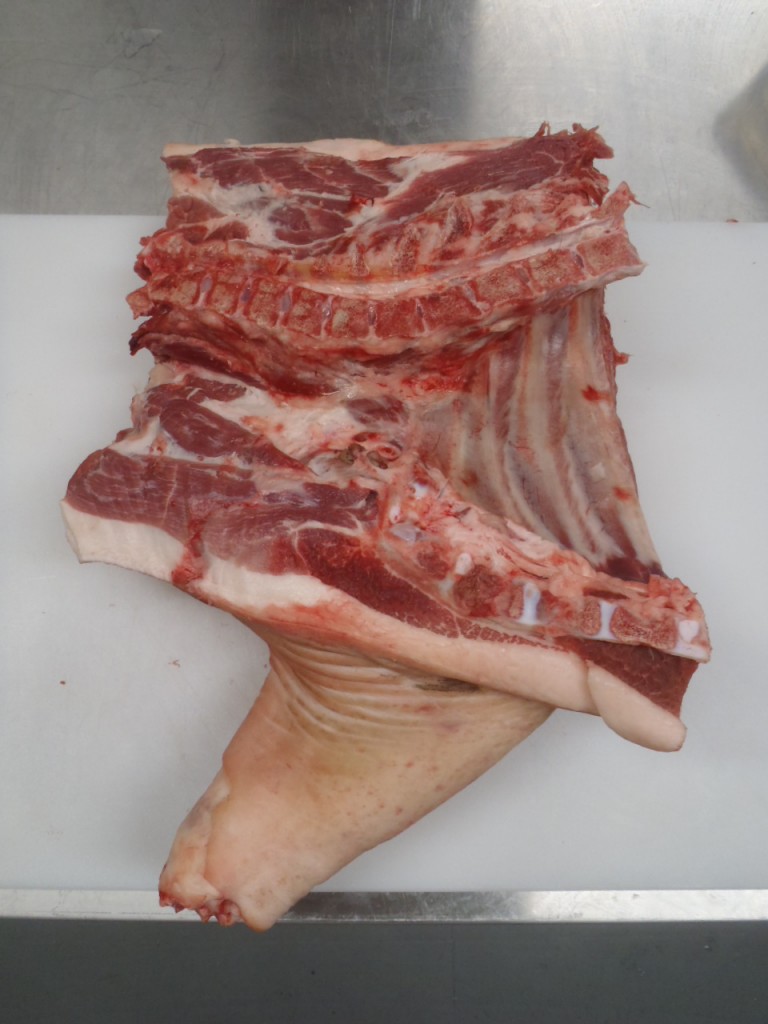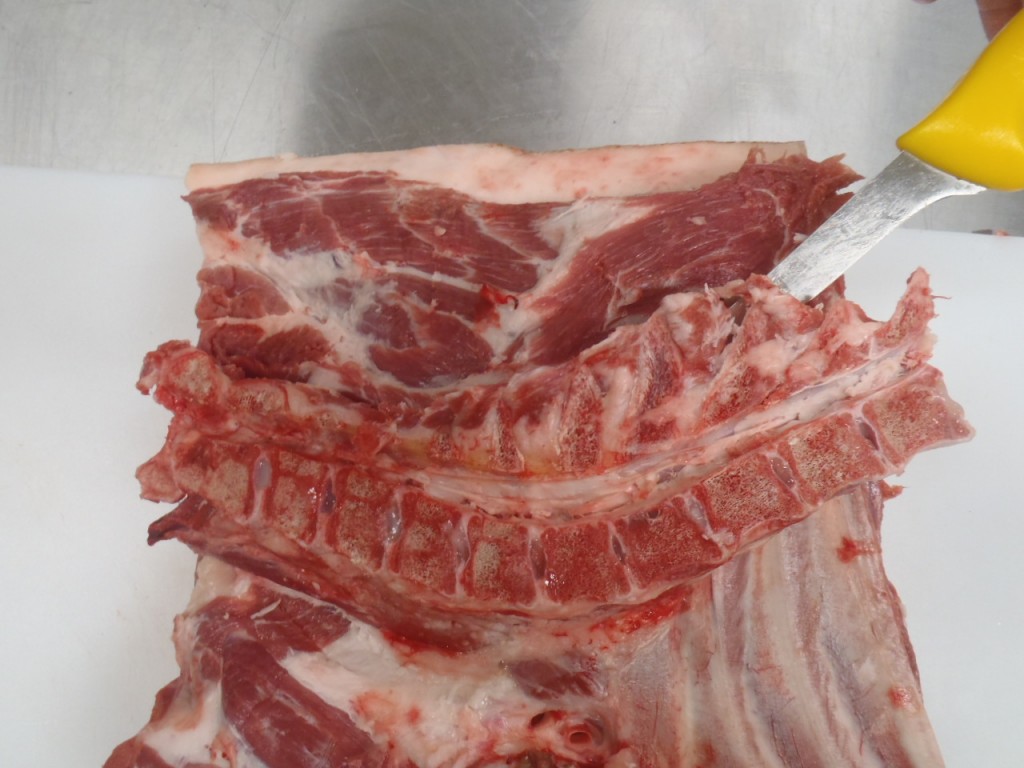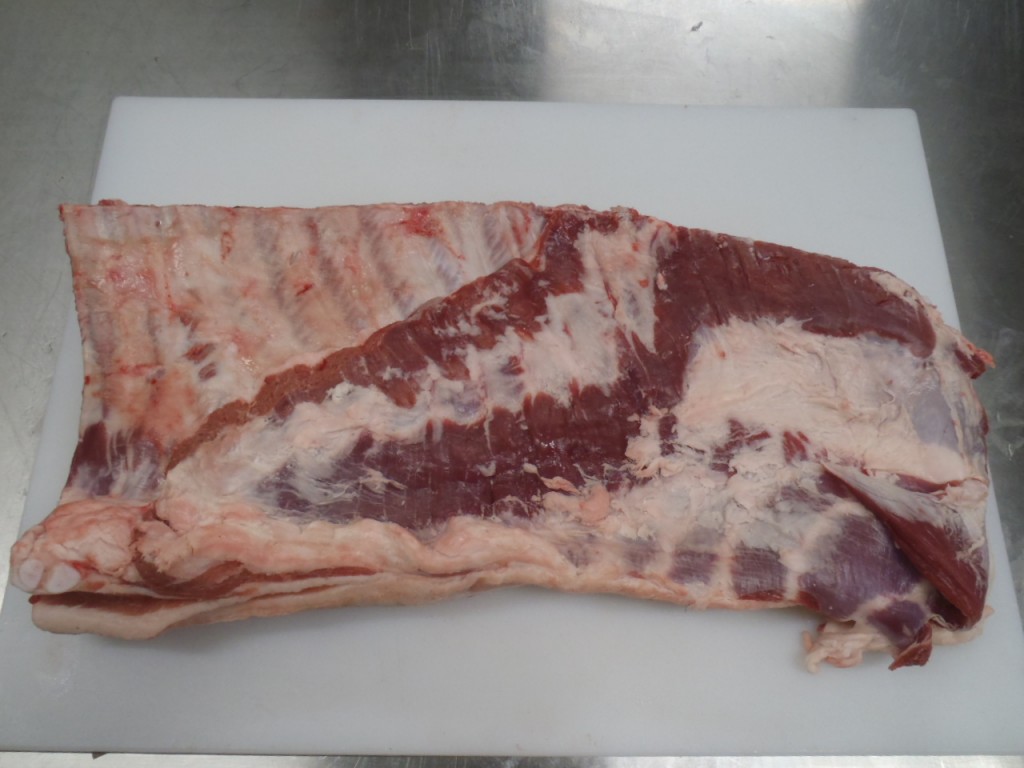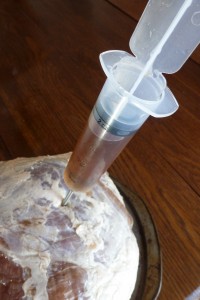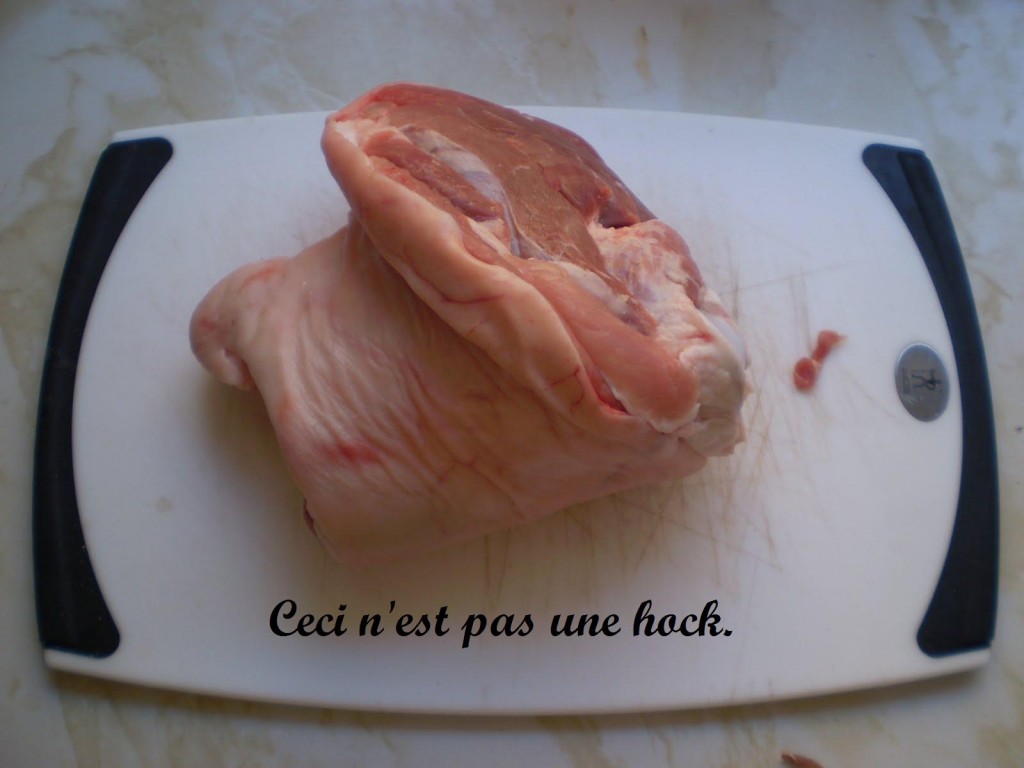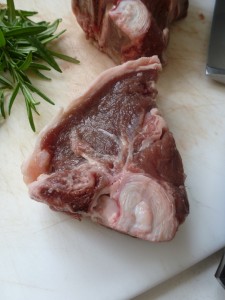 This is as casual as lamb gets at my house. Typically, serving lamb is an event. Lamb chops are probably the only cut that we would casually remove from the freezer the day we plan to cook it, then grill it briefly for a private dinner.
This is as casual as lamb gets at my house. Typically, serving lamb is an event. Lamb chops are probably the only cut that we would casually remove from the freezer the day we plan to cook it, then grill it briefly for a private dinner.
Lambs can be cut however you want, but typically the loin is divided into two sections. The thoracic section, containing the ribs, is usually formed into a rack of lamb. The lumbar section, which has no ribs, makes lamb chops. Lamb chops are analogous to the T-bone steaks on a side of beef. In the picture at left, the round, white bone at the bottom of the chop is the chine bone, or backbone. … Continue reading.
